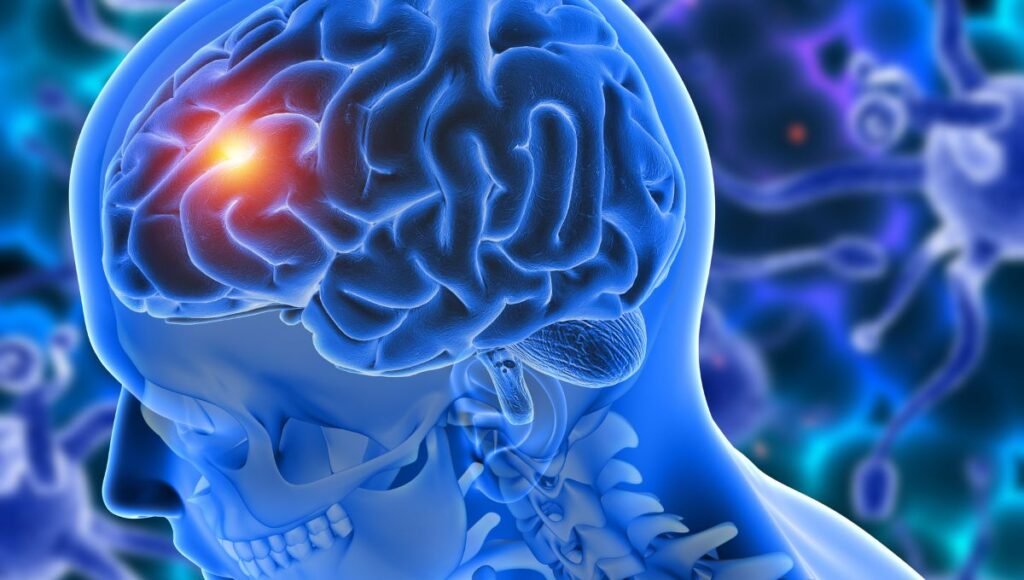 Knowledge of brain tumours
Knowledge of brain tumours
Brain and central nervous system tumours come in roughly 130 varieties, ranging from benign (non-cancerous) to malignant (cancerous). While certain tumours are comparatively frequent, others are incredibly rare. Below, we cover the four most prevalent forms of brain tumours: meningioma, glioblastoma, pituitary, and metastatic.
Brain tumours that have spread Secondary brain tumours include metastatic tumours, which are the most frequent type of brain tumour in adults. It seems that the brain was affected by cancer that travelled from another area of the body.
The American Brain Tumour Association estimates the annual identification of between 200,000 and 300,000 metastatic brain tumours, but the precise incidence rates remain unknown. The most frequent cause of metastatic cancers is lung or breast cancer.
Surgery frequently excises larger metastatic tumours. Radiation therapy, which directs radiation beams onto the tumorous region, may be used to treat smaller tumours.
Meningitis
Since these tumours originate in the meninges, the membranes lining the skull and spinal canal, they are not, strictly speaking, brain tumours. However, their growth could squeeze the brain, leading to a variety of impairments, such as memory loss, hearing and visual impairment, or even seizures.
Some tumours grow slowly over a few months, while others grow dormant for years. These tumours grow in cycles.
Meningiomas are often benign. However, doctors will recommend treatment that may include radiation therapy or surgery if the tumour begins to develop or create symptoms.
Glioblastoma
Glioblastoma and gliomas The name “glioma” is derived from the word “glial,” which refers to the brain cell that gives rise to this tumour. Glial cells keep neurons, or brain cells, healthy and functional. Different glial cell types have various specialized purposes. Every type of cell has a name associated with the tumour that arises from it. For example, oligodendrogliomas come from oligodendrocytes, yet astrocytes are the source of astrocytomas.
Brain tumours don’t have a stage. Staging refers to the spread of brain cancers across the body. We categorize brain tumours on an I–IV scale. The tumour’s grade indicates its tendency towards aggression.
Grade I rarely happens to adults; in childhood, there is always hope for recovery. Grades II-IV have no known remedy. But overhears, Grade II cancers grow slowly. Officially classified as malignant, grade III can develop over a few years. The most severe grade, grade IV, can develop in less than a year.
Glioblastomas are another name for grade IV tumours. They act in a very hostile manner. The most typical survival range is between 14 and 18 months. While metastatic brain cancers occur 7–14 times per 100,000 individuals annually, these tumours are quite rare, occurring in 2-3 per 100,000 people annually.
Tumor treatment

Tumor treatment, radiation therapy, chemotherapy, and surgical removal are among the many treatment choices. A tumour-treating field is defined as applying an electric current to the scalp that can enter the brain and stop glioblastoma cells from proliferating and dividing.
Our colleagues are conducting clinical research on glioblastoma at Penn Medicine in Philadelphia. Clinical trials examine novel treatment approaches to determine whether they can prolong patient life or increase patient satisfaction.
One promising area of research for treating glioblastoma is immunotherapy. It attacks the tumour by influencing the patient’s immune system. Researchers are also conducting clinical trials to explore novel chemotherapies that more accurately and precisely target tumours.
The deaths of senators Ted Kennedy and John McCain, as well as Beau Biden, the son of former Vice President Joe Biden, due to glioblastoma, have made headlines in recent years.
Brain tumours in the pituitary gland These malignancies are located in the pituitary gland, which is located directly beneath the point where the optic nerves converge on the brain. Numerous biological processes are regulated by the hormones that the pituitary gland produces. Hormones produced by pituitary tumours can impact energy levels, body growth, metabolism, and milk production. A pituitary gland tumour that becomes sufficiently large may compress the optic nerves, impairing eyesight.
Pituitary adenoma
A pituitary adenoma is a medical term for these tumours. Most of the time, they are harmless. If they spread or begin to show symptoms, they require treatment. Most symptomatic pituitary tumours, except for one subtype, undergo surgical removal through the nose. If the tumour is too large, conventional brain surgery becomes necessary.
Brain tumour symptoms
The most typical signs of brain tumour symptoms can include ongoing headaches, convulsions, growing weakness on one side of the body, trouble speaking, or quickly deteriorating memory.
Since headaches are a typical part of everyday living, consult your doctor if you have any of the following:
- Frequency and intensity increase throughout this and weeks.
- When you’re asleep, wake up. suSuddenlyppear, and you’ve never had persistent headaches before.
- Recall that a single headache does not warrant anxiety. We should only assess headaches that are regular, persistent, and getting worse.
- The journey of navigating a transformative rare brain tumour diagnosis is underway. I have spent nearly four years dealing with a rare brain tumour.
- During that period, I made an effort to use a “mind over matter” strategy.
- I find immense satisfaction and diversion in my work as a cybersecurity professional, which has helped me get through difficult times.

I’ve learned to keep my attention on the things I can manage and to surround myself with professionals who can guide me toward the best choices for my mental and physical health.
Juggling treatment and work
After being transferred from urgent care to an ER and then a nearby hospital, extensive testing, including MRI and CT scan, revealed a sizable lump in my frontal lobe. Post-surgery, I learned it was a grade 2 oligodendroglioma. Although 95% was removed, concerns for speech control prevented complete removal. After a month’s recovery, I resumed my cyber security job with lighter duties, using brain training apps for memory improvement. Regular MRI checks followed, and I enrolled in NIH clinical trials exploring my tumour’s biology and natural history. With guidance from Marta Penas-Prado, M.D., I found a new neuro-oncologist, continuing treatment and support today.
About two years after my diagnosis

in the fall of 2022, the scans revealed that my tumour was developing once more. Together with my neuro-oncologist, I decided to undergo radiation therapy first, then three different chemotherapy drugs: procarbazine, vincristine, and lomustine (CCNU). In short, we refer to this combination treatment as PCV. I shared my story in an article, Exit Disclaimer, to hopefully assist others who might be considering PCV.
Because of how severe my adverse effects became, I was unable to finish the entire PCV course. My legs swelled, I got rashes all over my body, and my white blood cell count decreased. In the end, I visited the ER twice. “My doctor indicated I had progressed sufficiently to receive the full benefit despite completing only four of the six therapy cycles. Recent scans showed no growth, and my doctor has different treatment options available if my condition changes.”
In the fall of 2020, I realized something wasn’t quite right. At the time, I was working from home because of COVID-19 regulations. Suddenly, when I was sitting in my home office, I lost track of a specific computer command and how to use it. Although I have used this command numerous times previously, I was taken aback by this. My mind was racing, but I couldn’t put it into words. “I opened my mouth to speak, but all that came out was gibberish. Later, I learned it was called an aphasic seizure.”
I wanted to stress out, but I focused on my breathing and forced myself to relax. I stayed there for a few minutes with my eyes closed, unable to move my limbs yet breathing deliberately and slowly. When I found my wife upstairs, I was able to explain what had transpired. We ran to the closest urgent care facility.
Overthinking the situation
I worked 40-hour work weeks throughout my treatment, even though I was exhausted, sick to my stomach, and constipated. My work helped divert my attention and get me through the terrible side effects, so I’m grateful for it. When necessary, I was able to take days off and even take quick midday naps.
I still struggle with short-term memory, so I use tools like Google Tasks to help me orororganisedmy o list. It helps me remember things like social events, professional meetings, projects, and more. I won’t have to keep anything in my thoughts that way.
In order to calm down and lessen my worries, I also meditate in the mornings. My diagnosis is beyond my control, yet I still have power over my mindset. I can stop worrying about the future and instead relax by telling myself to take things one day at a time. I hope that those who are experiencing a similar circumstance may find my information helpful.



